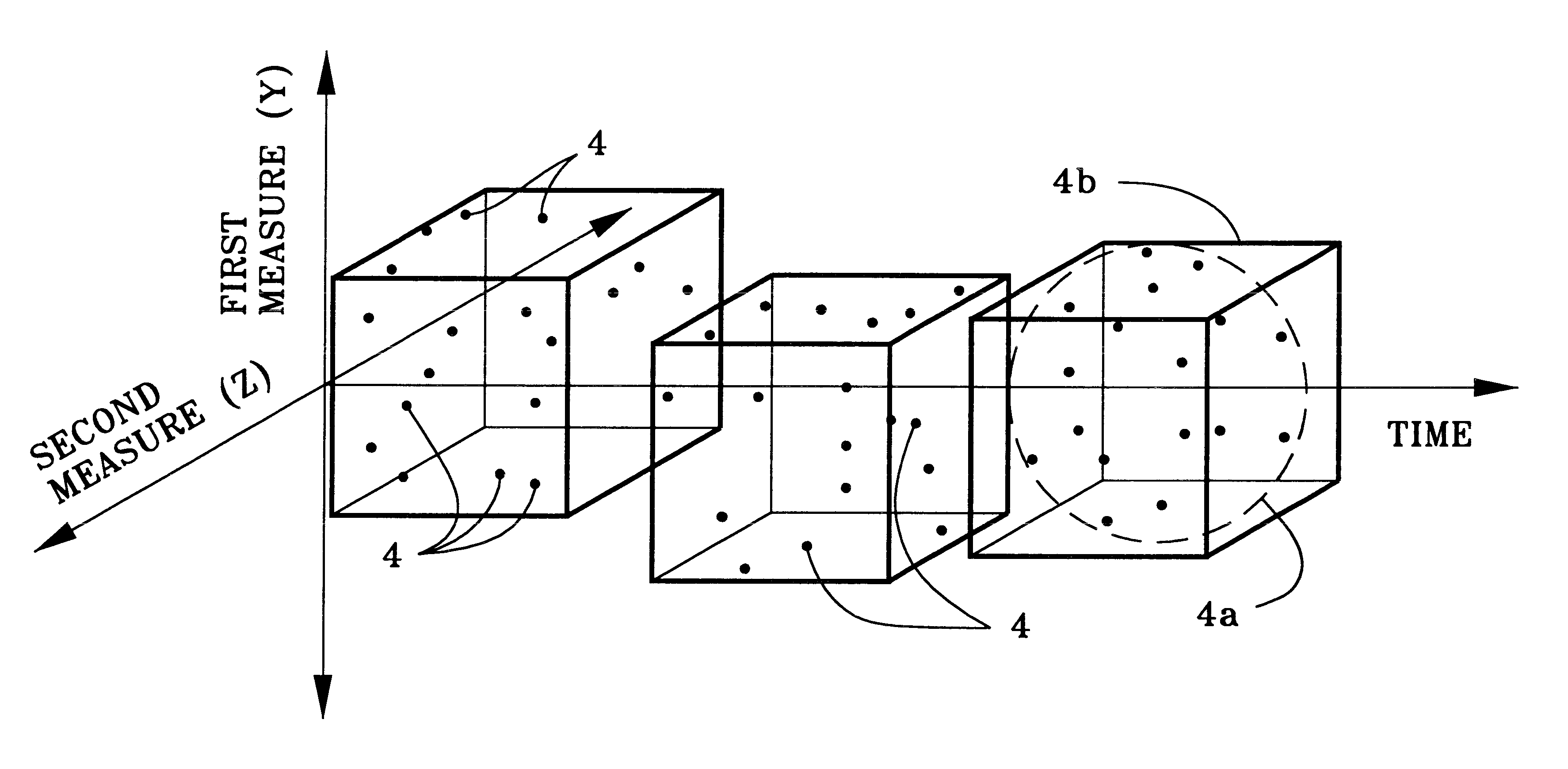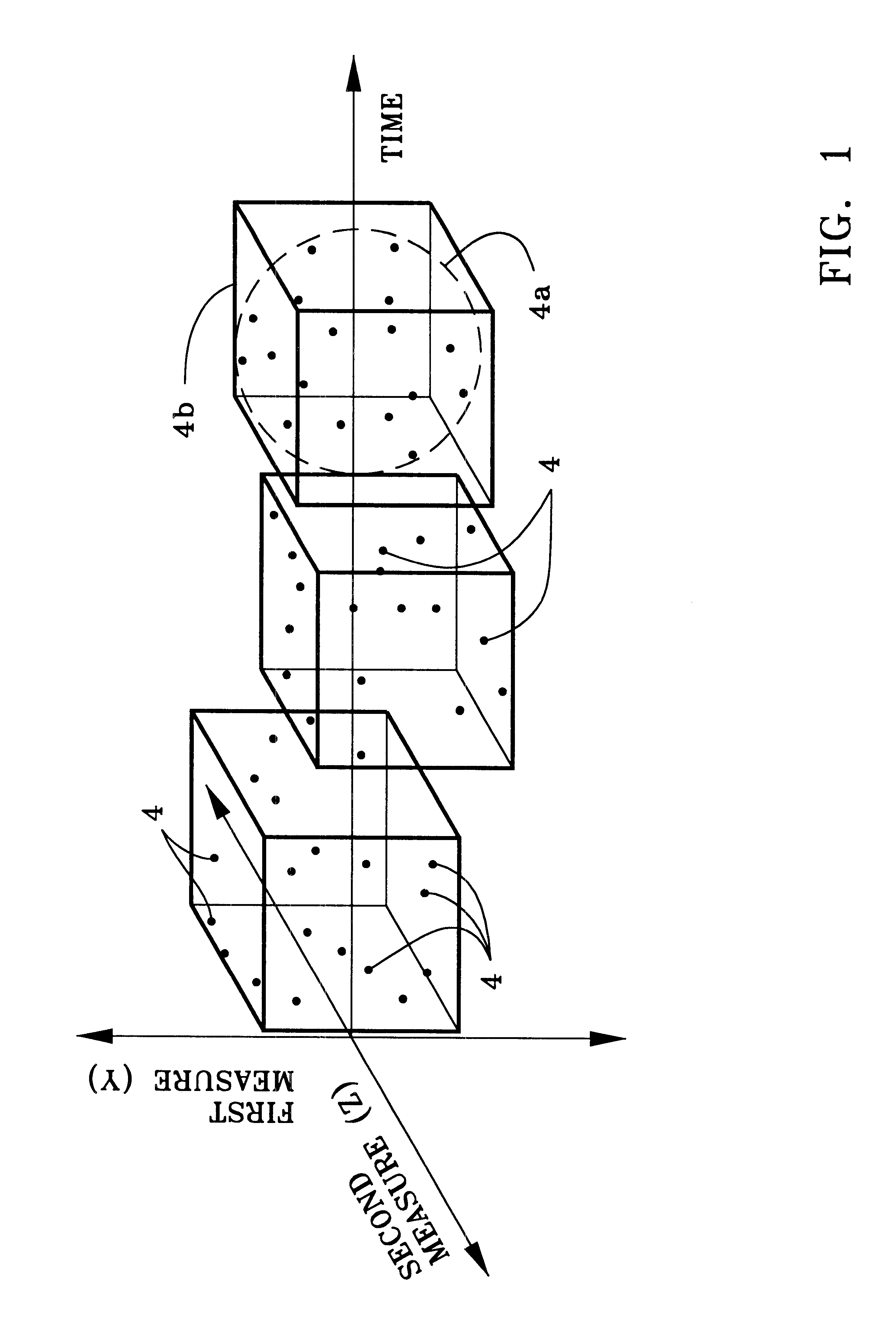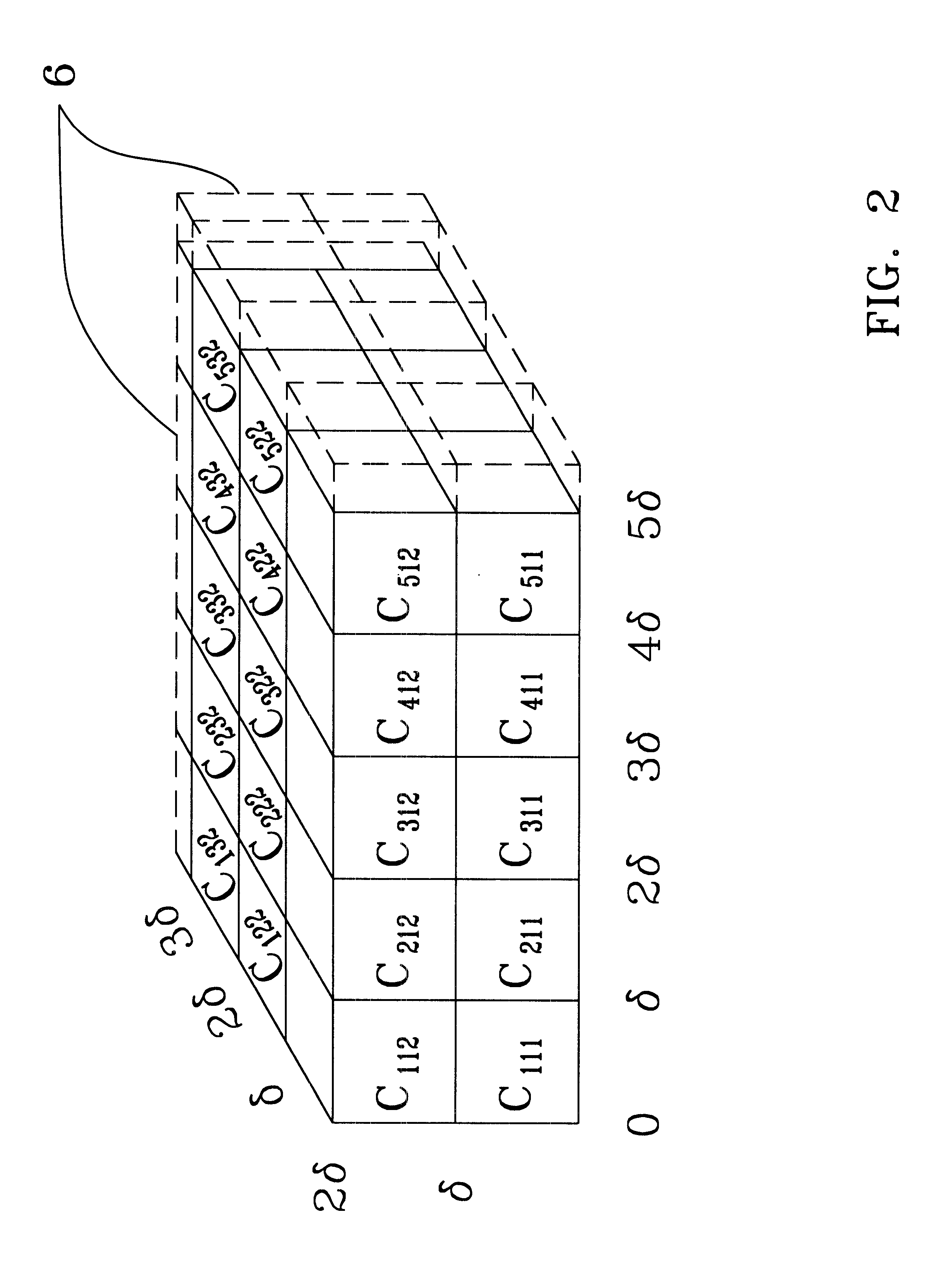System and apparatus for the detection of randomness in three dimensional time series distributions made up of sparse data sets
a time series distribution and randomness technology, applied in the field of signal processing/data processing systems, can solve the problems of weakening the theoretical approach, not necessarily true for small sample methods applied to large data sets, and failure of large sample methods
- Summary
- Abstract
- Description
- Claims
- Application Information
AI Technical Summary
Benefits of technology
Problems solved by technology
Method used
Image
Examples
Embodiment Construction
Having thus explained the theory of the invention, an example thereof will now be presented for purposes of further illustration and understanding (see, FIGS. 3 and 4). A value for N is first selected, here N=30 (step 100, FIG. 3). A time series distribution of data points is then read into a display / operating subsystem .delta. adapted to accommodate a data set of size N from data processing system 10 (step 102). Thereafter, the absolute value of the difference between the largest and the smallest data points for each measure, .DELTA.Y and, is determined by a first comparator device 12 (step 104). In this example, it will be assumed that N=.DELTA.t=30 measurements with a measured amplitudes of .DELTA.Y=20 units and .DELTA.Z=9 units. The N, .DELTA.Y and .DELTA.Z values are then used by window creating device 14 to create a virtual volume in the display / operating system enclosing the input time series distribution, the size of the volume so created being .DELTA.t*.DELTA.Y*.DELTA.Z=540...
PUM
 Login to View More
Login to View More Abstract
Description
Claims
Application Information
 Login to View More
Login to View More - R&D
- Intellectual Property
- Life Sciences
- Materials
- Tech Scout
- Unparalleled Data Quality
- Higher Quality Content
- 60% Fewer Hallucinations
Browse by: Latest US Patents, China's latest patents, Technical Efficacy Thesaurus, Application Domain, Technology Topic, Popular Technical Reports.
© 2025 PatSnap. All rights reserved.Legal|Privacy policy|Modern Slavery Act Transparency Statement|Sitemap|About US| Contact US: help@patsnap.com



